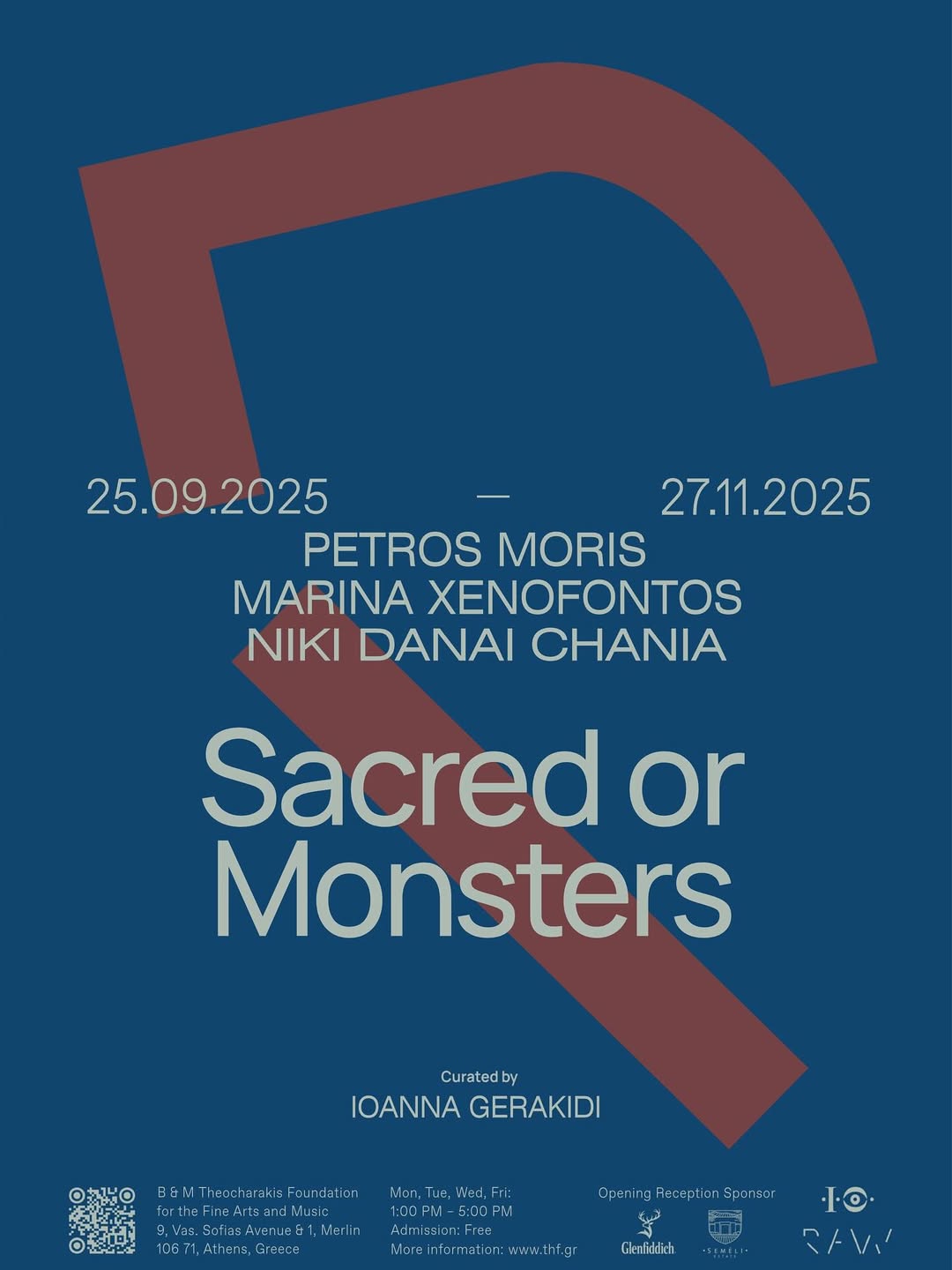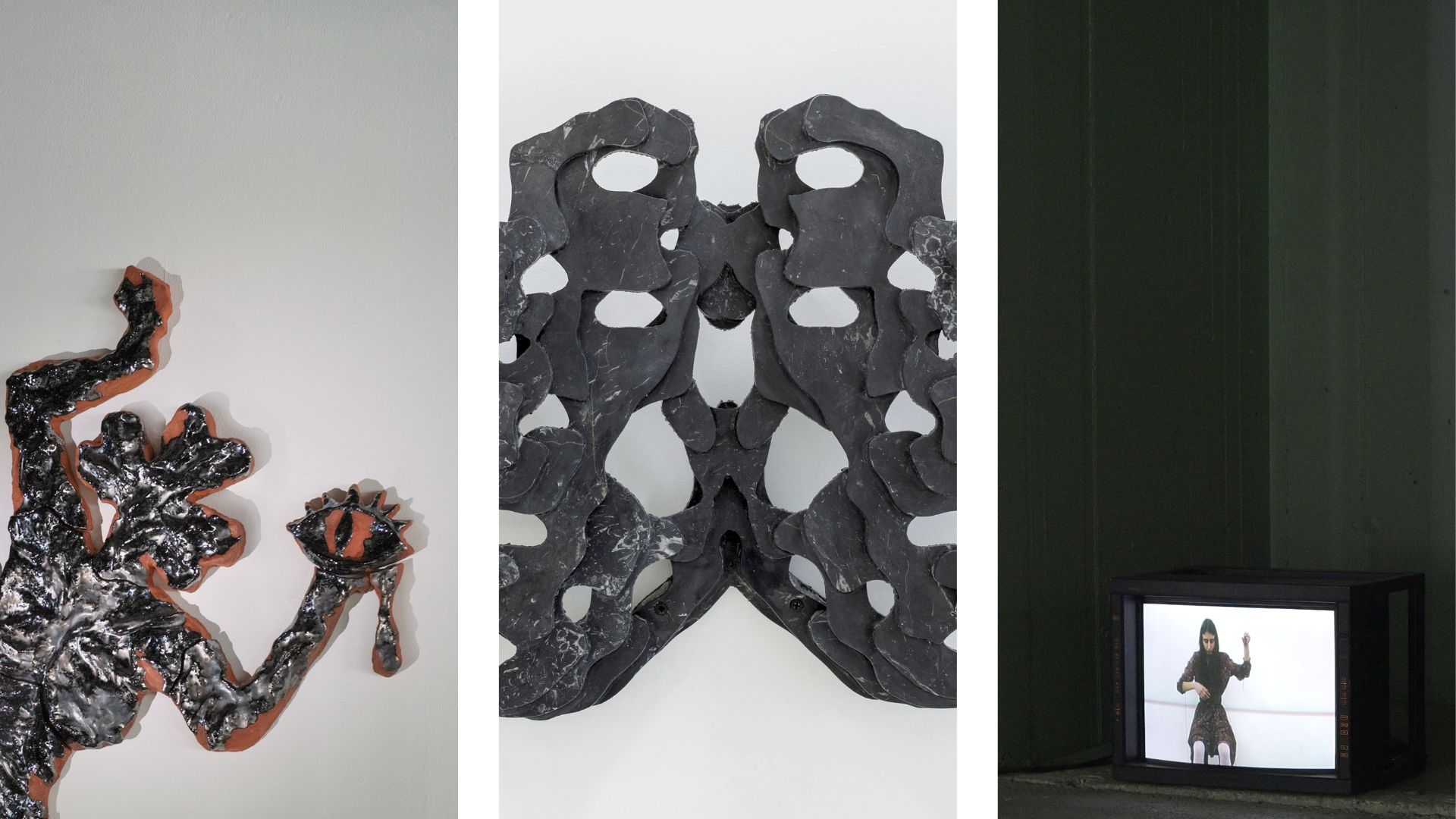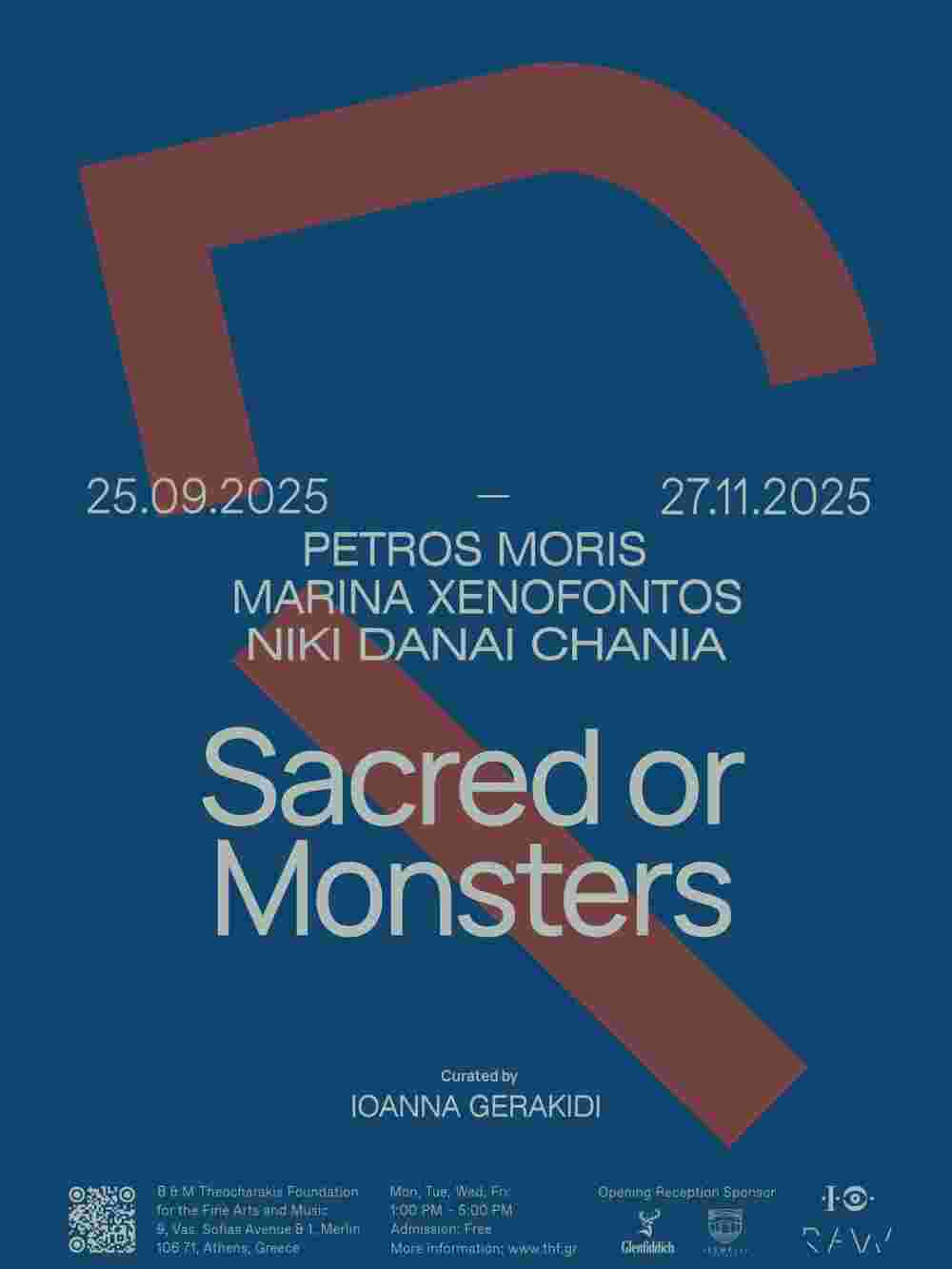
GROUP EXHIBITION “SACRED OR MONSTERS” CURATED BY IOANNA GERAKIDI
The group exhibition Sacred or Monsters, through a composition of sculptures, video performances, inscriptions, and sound archives, longs to explore the multifaceted meanings and connotations of identity as a malleable or mutable structure carrying the possibility to undemonize every Other, stripping away its semiotic weight as dangerous, dirty, or abnormal. Post-human entities, mythical creatures, ever-transforming beings, and exhausted yet resilient psyches and bodies coexist, shaping a narrative completed through its fragmentation—an uncanny chronicle that at times frightens, dazzles, disorients, while simultaneously illuminating, informing, and empowering.
The exhibition aims to reintroduce the self beyond its immovable and fixed entity and, along, to think of history as a fluid, an often temporal or paradoxical system. How can we reframe monstrosity, a construct that often generates, imposes and perpetuates psychosocial and geopolitical hierarchies? How can we turn it into a tool for dismantling power structures, authoritative gazes and identity norms?
The works exhibited, emerge from what remains unspeakable, subterranean, disguised; they arise from and with malformed bodies, they grow into divine species, they speak of myths and imperceptible gestures. The cavernous, the secret, the transcendent—that which is often perceived as chthonic, foreign, or undesirable—are the main vehicles through which the artists renegotiate conflicting structures and erratic behaviors we humans enact daily.
The exhibition first seeks to recognize and then affirm these constant yet spasmodic clashes. Starting from the building’s depths, situated in a seemingly inaccessible portal, Petros Moris’ marble diptych sculpture titled Entropy as Hardship / Entropy as Kinship explores the entropy as a condition that legitimizes both disintegration and recomposition, confronting them as mechanisms for reevaluating the anarchic, or the opposing. By using an aesthetically idiolectic scheme, a language borrowing elements from both tectonic geologies and the urban landscape, Moris’ sculptural installation introduces a series of persistently mutant questions around a tongue-less, willfully incomprehensible vocabulary. In his work, the oracle, in its duality, encourages us, audiences, to query our contact with the visible or intelligible, to be initiated into that which consciously chooses the covert, to find in the unknown a haptic form of resistance.
The monstrous, now seen as a parable, gains new meaning—it becomes perceivable through its potential, its manifested reservation, or its sanctity. Marina Xenofontos’ sculptural installation, through the video performances Pinocchio, 2008-2009/2025, To Egon Schiele, 2008-2009/2025 and Am I a puppet, 2008-2009/2025 which interact asynchronously, seeks to reinforce this absurd resilience, investigating the idea of an other that dwells within the self. By transforming her own identity, the artist look with, rehearses, and performs each gesture as an encased imitation; her props and postures enact the stubbornly odd. Through prosthetic extensions that alter her face, through threads that determine her movements, and through gestures instigating the body’s appearance, the works long to exist as allegories uttering desires, emancipations, imperatives, transpositions. The puppet steps to the stage, only to deforming herself, to claim her agency, to expand her limits.
Tainted and sacred, the ideal is profane, the marginal’s the focal point of a narrative that both belongs to and eludes otherness. Doves in the Kitchen, the sculptural, echoing constellation of Niki Danai Chania, which is placed on the Foundation’s rooftop, brings together the exhibition’s narrative. Her work assembles personal diaries with stories where demons carry freedom, grave offerings accompany another kind of birth, reflections attest vulnerability. By encountering a material like metal—capable of freezing or heating based on its surroundings—and by re-evaluating the semantics of gold as a material tied to the emblematic or pompous, the artist negotiates the relationship between the unholy and the blessed, the fabled and the real, the unwanted and the cherished.
How can the monstrous, no longer confined to a narrative associated with the abject, the repulsive, the external, or the menacious, serve as an example, a motive, or a medium for the disassembly and reshaping of a collective identity, a resilient body, a reality grounded in imaginative possibilities? How can our actions, interactions, and decisions be informed by those of mythical, unnoticed, peripheral, or just other beings—validating an ongoing dialogue between the past and the future, bridging the dispersed and the complete?
The exhibition Sacred or Monsters wishes to exist as a series of hypotheses and inquiries—voiced by what is deemed inferior yet took the place of the prominent; by what was unspeakable but found space to exist; by bodies which grew bigger in order to be freed.
Artists: Petros Moris, Marina Xenofontos, Niki Danai Chania
Curator: Ioanna Gerakidi
Artistic Director: Marina Miliou Theocharakis
Exhibition Coordinator: Nefeli Siafaka
Communication: Marina Kampouroglou, Christina Oikonomou
Duration: September 25–November 27, 2025
Opening hours: Monday, Tuesday, Wednesday, Friday: 13:00 – 17:00
Admission: Free
*Ioanna Gerakidi and Petros Moris are SNF ARTWORKS Fellows
PARALLEL EVENTS PROGRAM:
Dialogues on the exhibition – Open discussion with the artists and curator
October 2
Thursday, 7:00 p.m. – 8:30 p.m.
Studio visit with the artist Niki Danai Chania
October 9
Thursday, 6:30 p.m. – 7:30 p.m.
Studio visit with the artist Petros Moris
October 30
Thursday, 6:30 p.m. – 7:30 p.m.
Studio visit with the artist Marina Xenofontos
November 6
Thursday, 6:30 p.m. – 7:30 p.m.
Guided tour of the exhibition Sacred or Monsters from the curator Ioanna Gerakidi
November 20
Thursday, 6:30 p.m. – 7:30 p.m.

